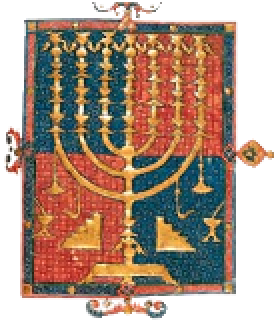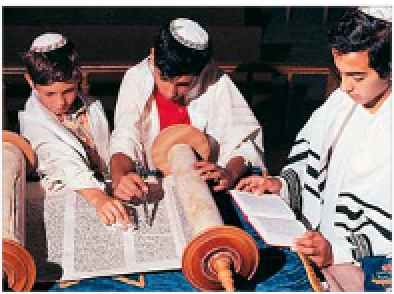Travel Reference
In-Depth Information
Judaism
Jewishness is not just a matter of religion but of
belonging to a people. Jews believe themselves
to be descended from Abraham, to whom God
promised a land “unto thee, and to thy seed after
thee”. Judaism traditionally passes through the female
line or by conversion, different Jewish movements
(Orthodox, Conservative, Reform) having different
requirements. Practising Jews conduct their life by
the
Torah
, which can be translated as “instruction”
or “guidance”. Its core is the Five Books of Moses,
but the Torah also includes all the teachings and
laws within the Hebrew Bible (Old Testament) and
subsequent interpretations by rabbinic scholars. The
creation of the State of Israel has presented the Jewish
people with new political and religious challenges.
The menorah
, a seven-
branched candlestick,
derives from the candlestick
that originally stood in
Solomon's Temple.
THE WESTERN WALL
This is all that remains of the Jews' great
Temple
(see pp44-5)
, built to hold the
Ark of the Covenant
(see p21)
. It is the
holiest of all Jewish sites and a major
centre of pilgrimage
(see p85)
.
THE SCROLLS OF THE TORAH
The Torah is traditionally inscribed on
scrolls. During a synagogue service the
scrolls are ceremonially raised to the
congregation before being read. It is an
honour to read them. A boy of 13 years
of age or a girl of 12 (Reform Jews only)
is
bar
or
r bat mitzvah
, a
“child of the command-
ment”, entitled to read
from the scroll at a
public service.
The Scrolls
, when not in
use, are placed in the
ark. They may be kept in
an ornamental box
(right)
or else tied with a binder
inside a decorated cover,
adorned with a breast-
plate, yad, bells or crown.
The yad
(“hand”) is a pointer used to avoid
touching the sacred text. It is also meant to direct
the reader's attention to the precise word and to
encourage clear and correct pronunciation.








